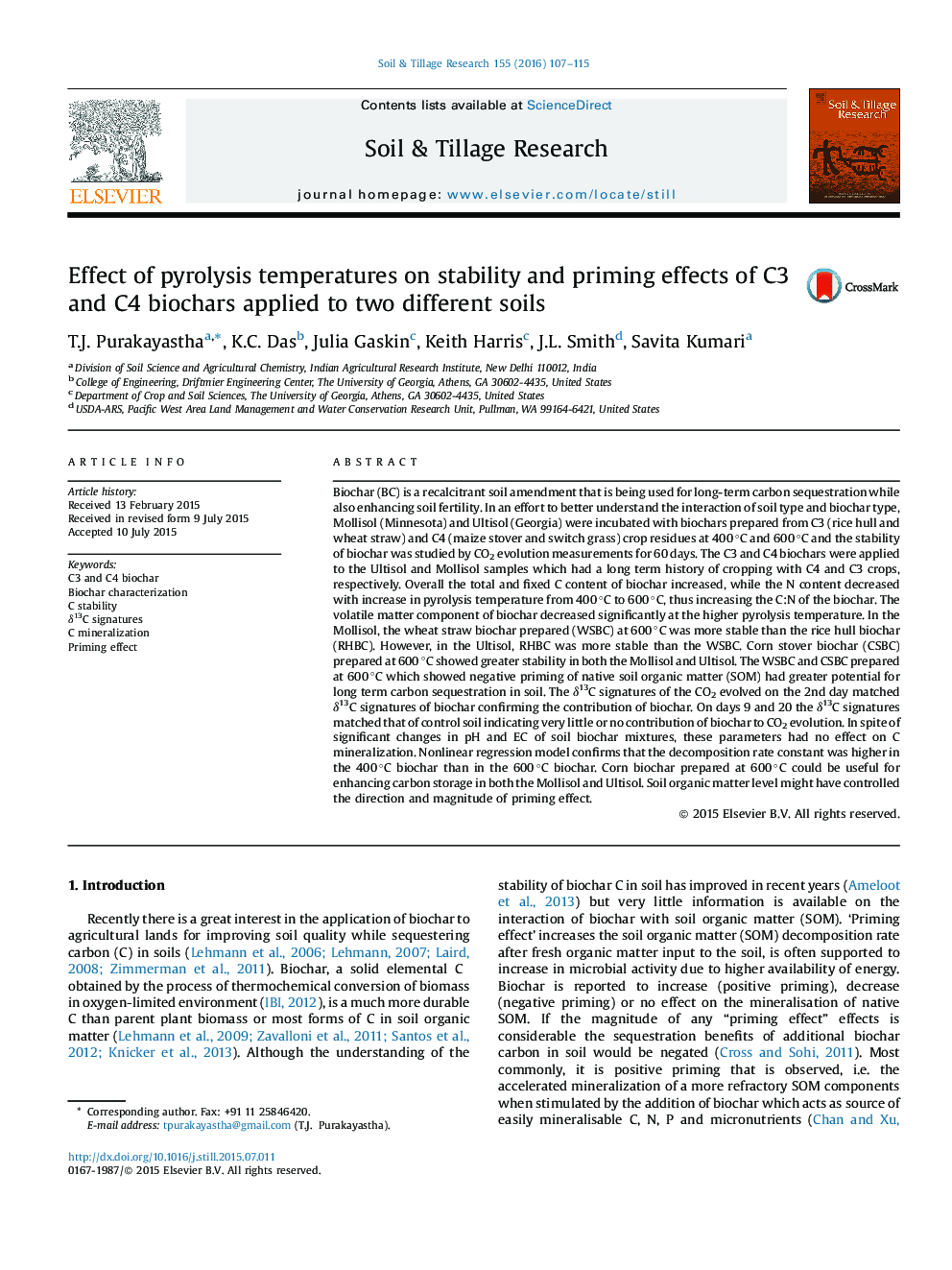| کد مقاله | کد نشریه | سال انتشار | مقاله انگلیسی | نسخه تمام متن |
|---|---|---|---|---|
| 305467 | 513031 | 2016 | 9 صفحه PDF | دانلود رایگان |

• Chemical characterization and stability of biochars studied.
• The biochar prepared at higher pyrolysis temperature of 600 °C showed negative priming in soils with higher organic matter level.
• The short-term C mineralization did not always follow as per the volatile matter, ash content or H:C ratio of biochar.
• Wheat straw biochar showed higher stability in Mollisol, while corn stover biochar showed higher stability in both Mollisol and Ultisol.
Biochar (BC) is a recalcitrant soil amendment that is being used for long-term carbon sequestration while also enhancing soil fertility. In an effort to better understand the interaction of soil type and biochar type, Mollisol (Minnesota) and Ultisol (Georgia) were incubated with biochars prepared from C3 (rice hull and wheat straw) and C4 (maize stover and switch grass) crop residues at 400 °C and 600 °C and the stability of biochar was studied by CO2 evolution measurements for 60 days. The C3 and C4 biochars were applied to the Ultisol and Mollisol samples which had a long term history of cropping with C4 and C3 crops, respectively. Overall the total and fixed C content of biochar increased, while the N content decreased with increase in pyrolysis temperature from 400 °C to 600 °C, thus increasing the C:N of the biochar. The volatile matter component of biochar decreased significantly at the higher pyrolysis temperature. In the Mollisol, the wheat straw biochar prepared (WSBC) at 600 °C was more stable than the rice hull biochar (RHBC). However, in the Ultisol, RHBC was more stable than the WSBC. Corn stover biochar (CSBC) prepared at 600 °C showed greater stability in both the Mollisol and Ultisol. The WSBC and CSBC prepared at 600 °C which showed negative priming of native soil organic matter (SOM) had greater potential for long term carbon sequestration in soil. The δ13C signatures of the CO2 evolved on the 2nd day matched δ13C signatures of biochar confirming the contribution of biochar. On days 9 and 20 the δ13C signatures matched that of control soil indicating very little or no contribution of biochar to CO2 evolution. In spite of significant changes in pH and EC of soil biochar mixtures, these parameters had no effect on C mineralization. Nonlinear regression model confirms that the decomposition rate constant was higher in the 400 °C biochar than in the 600 °C biochar. Corn biochar prepared at 600 °C could be useful for enhancing carbon storage in both the Mollisol and Ultisol. Soil organic matter level might have controlled the direction and magnitude of priming effect.
Journal: Soil and Tillage Research - Volume 155, January 2016, Pages 107–115